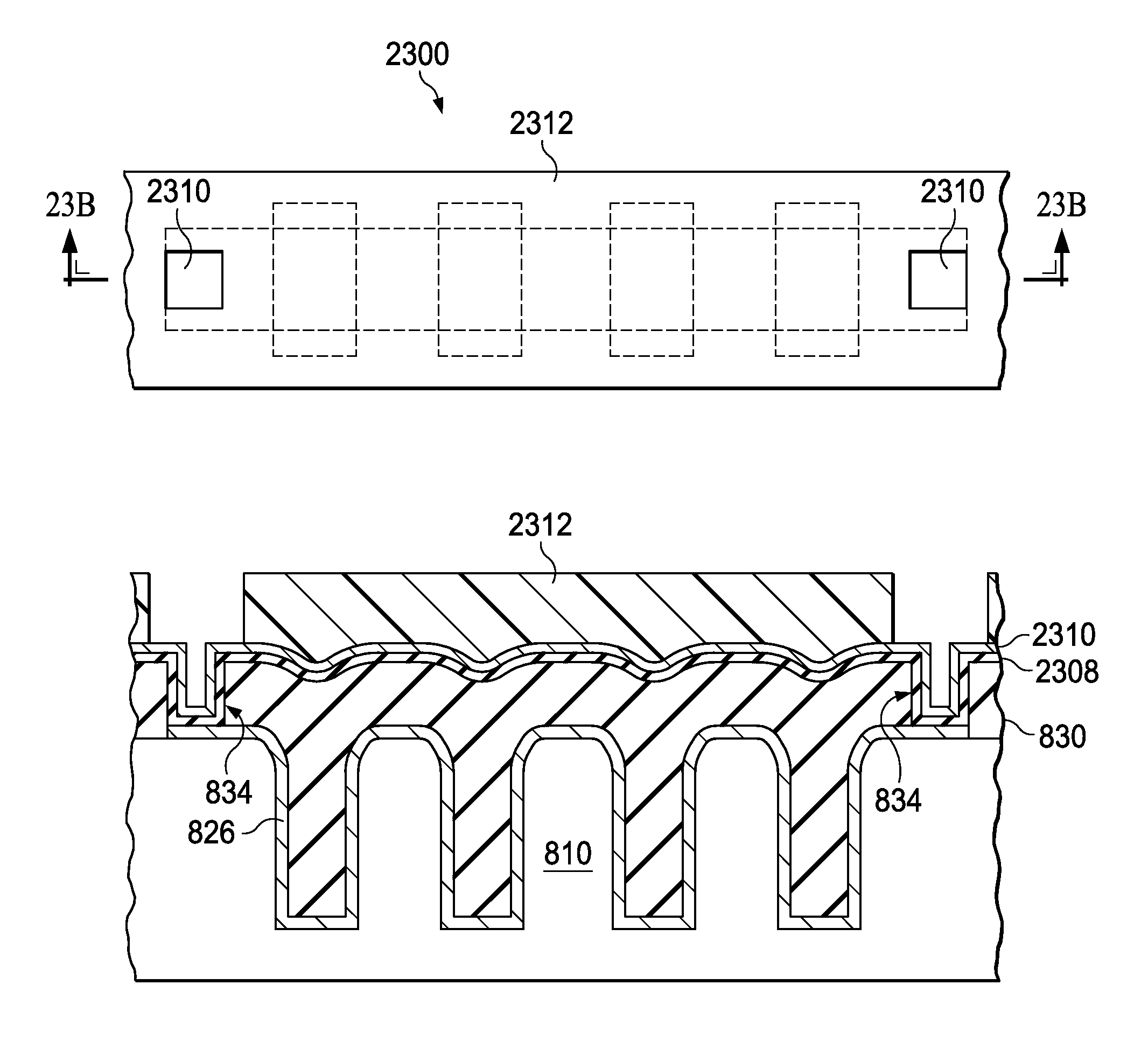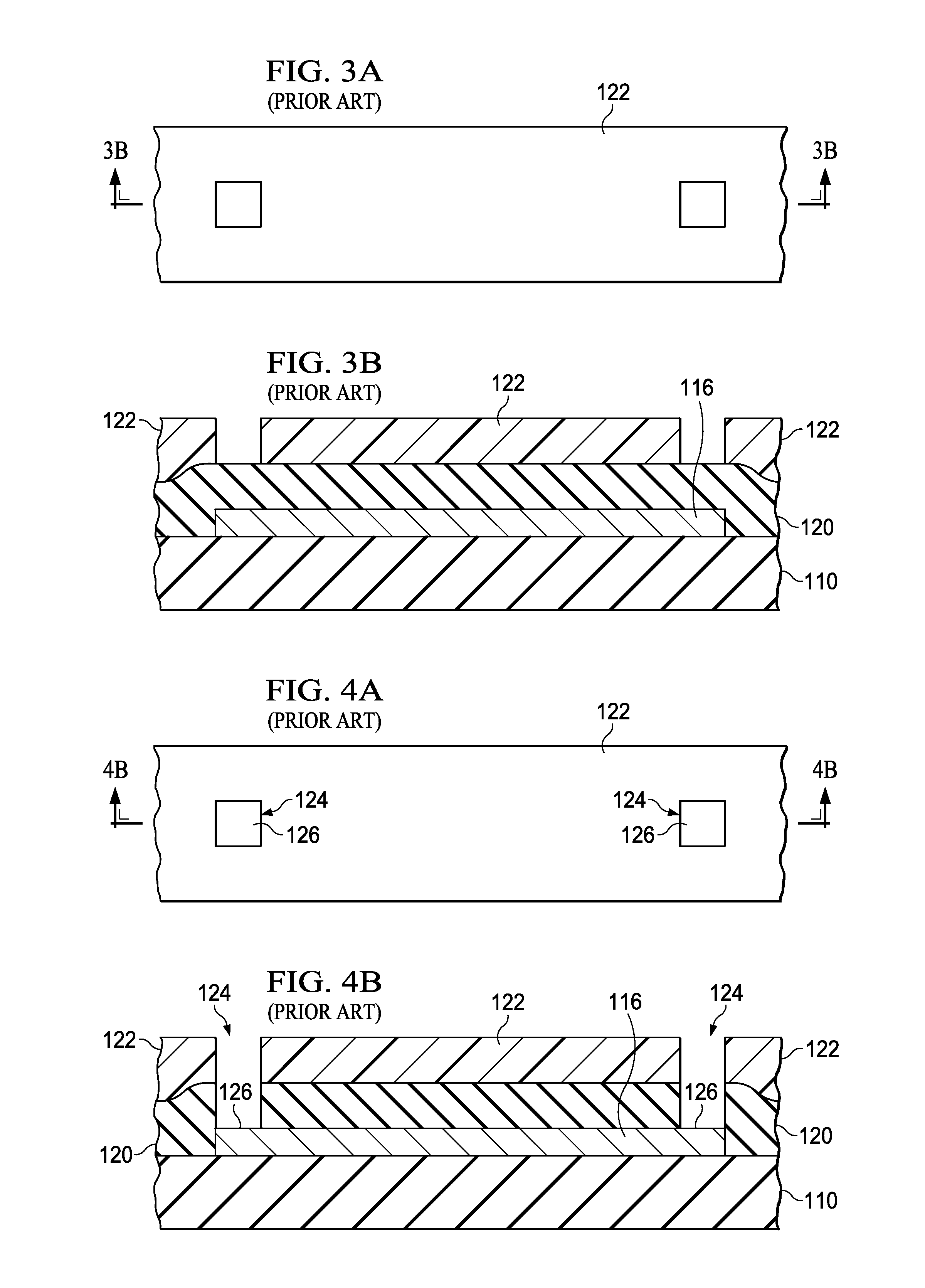High-resistance thin-film resistor and method of forming the resistor
a thin-film resistor, high-resistance technology, applied in the direction of resistor details, basic electric elements, solid-state devices, etc., can solve the problems of increasing the surface area of the thin-film resistor b, difficult or expensive use of exotic materials with high resistance, and increasing the resistance of thin-film resistors. , to achieve the effect of increasing the resistan
- Summary
- Abstract
- Description
- Claims
- Application Information
AI Technical Summary
Problems solved by technology
Method used
Image
Examples
Embodiment Construction
[0026]FIGS. 8A-8B to 13A-13B show a series of views that illustrate an example of a method 800 of forming a thin-film resistor in accordance with the present invention. FIGS. 8A-13A show a series of plan views, while FIGS. 8B-13B show a series of cross-sectional views taken along lines 8B-8B through 13B-13B of FIGS. 8A-13A.
[0027]As shown in FIGS. 8A-8B, method 800 begins by forming a body 810. Body 810, in turn, includes a non-conductive top surface 812 and one or more trenches 814. Each of the one or more trenches 814 extends down from the non-conductive top surface 812 into body 810. In addition, each of the one or more trenches 814 has a non-conductive inner surface 816 such that no trench 814 exposes any conductive portion of body 810.
[0028]Non-conductive inner surface 816, in turn, includes a bottom surface 817. Further, each of the one or more trenches 814 has a length, a width W orthogonal to the length, and a depth D orthogonal to the length and the width W that extends from...
PUM
 Login to View More
Login to View More Abstract
Description
Claims
Application Information
 Login to View More
Login to View More - R&D
- Intellectual Property
- Life Sciences
- Materials
- Tech Scout
- Unparalleled Data Quality
- Higher Quality Content
- 60% Fewer Hallucinations
Browse by: Latest US Patents, China's latest patents, Technical Efficacy Thesaurus, Application Domain, Technology Topic, Popular Technical Reports.
© 2025 PatSnap. All rights reserved.Legal|Privacy policy|Modern Slavery Act Transparency Statement|Sitemap|About US| Contact US: help@patsnap.com



